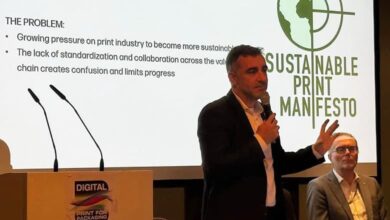SGI Dubai 2018 Opens to a Great Start
SGI Dubai 2018 has thrown its doors open to visitors and exhibitors. Attendees of the event will get to witness the best-kept secrets in the industry from across the globe. Exhibitors such as Masonlite, Epson, Signtrade, Canon ME, Heliozid Oce, OKI, Copatra, Flex-Europa, Dynagraph, Wellcare Infotech, Bluerhine, Mutoh and several other brands have brought in their latest products for launch in the MENA market.
Year 2018 is all set to be littered with new product launches brought on by the expected growth in the industry. The first edition of SGI Dubai was held in 1997, and in the past 20 years the event has grown into the largest show in the region for large format printing, graphic and signage industry. SGI Dubai 2018 celebrates the 21st edition of this premier exhibition. The SGI Dubai 2018 show is being held at the iconic Dubai World Trade Centre from January 14th to 16th 2018 at the halls 3, 4, 5, 6, 7 and 8.
SGI Dubai 2018 has also roped in exhibitors and trade visitors across the globe including, Africa, USA, UK, Germany, China and Japan, among others. “Last year we witnessed a significant footfall at the show and we are looking forward to welcoming more visitors this year. Several exhibitors from across the globe are looking to connect with the stakeholders from the African printing and signage industry. Some of the products are even developed keeping the African printing industry’s requirements,” stated Sharif Rahman, CEO of IEC.
SGI Dubai is a globally recognised business forum which entails seminars and workshops led by industry pioneers. The show serves as a key platform where visitors can reach out to exhibitors who comprise of architects, sign makers, print and production manufacturers, media agencies, real-estate developers, brand and image consultants among others.
IEC is the driving force behind the 21-year old ‘SGI Dubai’ show, which is one of the most awaited exhibitions in the MENA region within the print, signage and imaging industries. SGI Dubai 2018 focusses on digital signage, textile printing, LED, digital printing, screen printing and retail signage industry sectors.
“Every year, we try to bring in something new to the SGI Dubai platform. This year we are looking at Knowledge Series, a panel discussion with experts in the printing and signage industry. Then we have a larger edition of ‘Wall of Fame’, where in exhibitors can showcase their creative masterpieces that they have created during 2017. It will be judged by the social community and industry stakeholders,” added Rahman.





